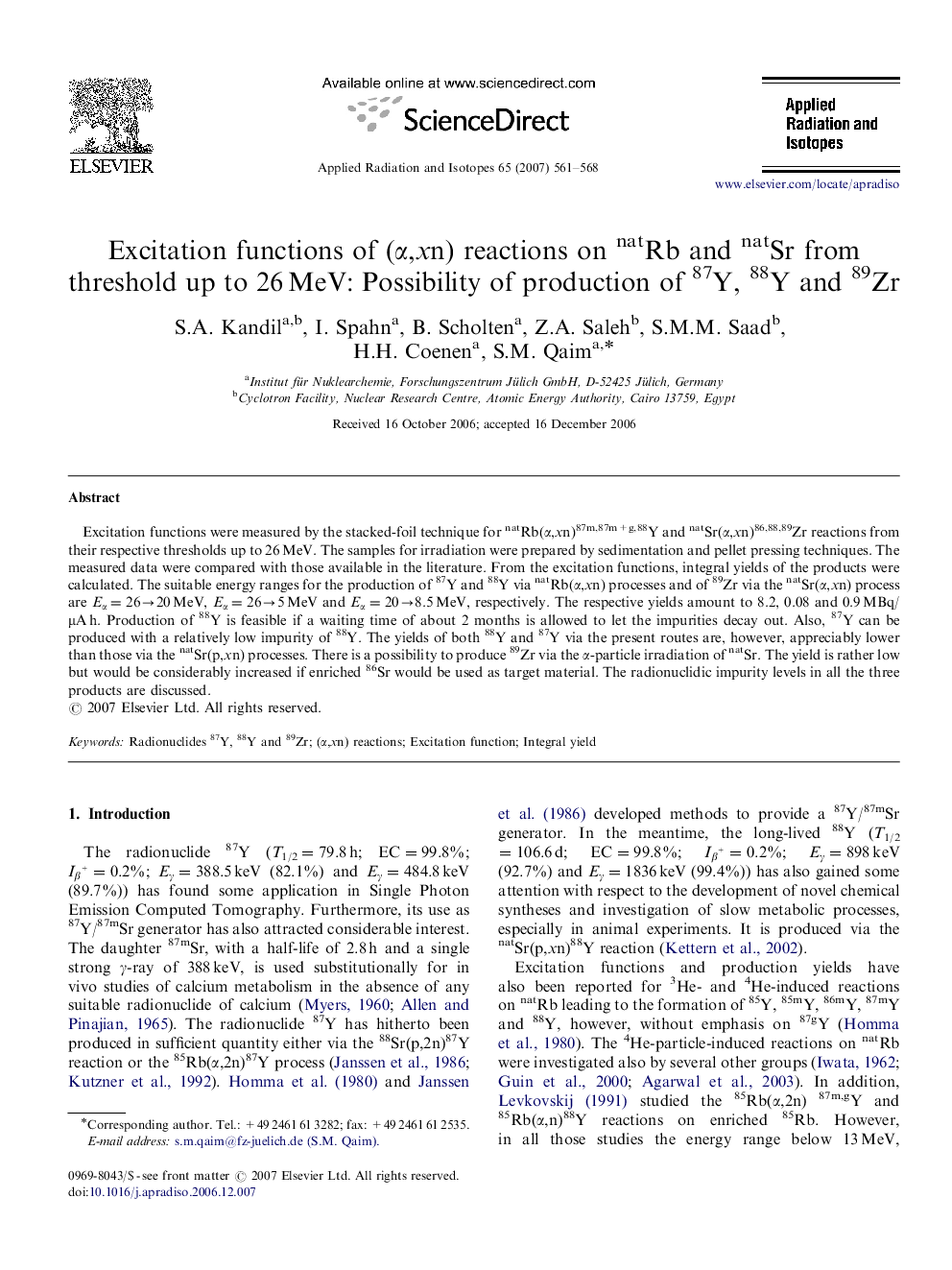| Article ID | Journal | Published Year | Pages | File Type |
|---|---|---|---|---|
| 1877321 | Applied Radiation and Isotopes | 2007 | 8 Pages |
Excitation functions were measured by the stacked-foil technique for natRb(α,xn)87m,87m+g,88Y and natSr(α,xn)86,88,89Zr reactions from their respective thresholds up to 26 MeV. The samples for irradiation were prepared by sedimentation and pellet pressing techniques. The measured data were compared with those available in the literature. From the excitation functions, integral yields of the products were calculated. The suitable energy ranges for the production of 87Y and 88Y via natRb(α,xn) processes and of 89Zr via the natSr(α,xn) process are Eα=26→20 MeV, Eα=26→5 MeV and Eα=20→8.5 MeV, respectively. The respective yields amount to 8.2, 0.08 and 0.9 MBq/μA h. Production of 88Y is feasible if a waiting time of about 2 months is allowed to let the impurities decay out. Also, 87Y can be produced with a relatively low impurity of 88Y. The yields of both 88Y and 87Y via the present routes are, however, appreciably lower than those via the natSr(p,xn) processes. There is a possibility to produce 89Zr via the α-particle irradiation of natSr. The yield is rather low but would be considerably increased if enriched 86Sr would be used as target material. The radionuclidic impurity levels in all the three products are discussed.
